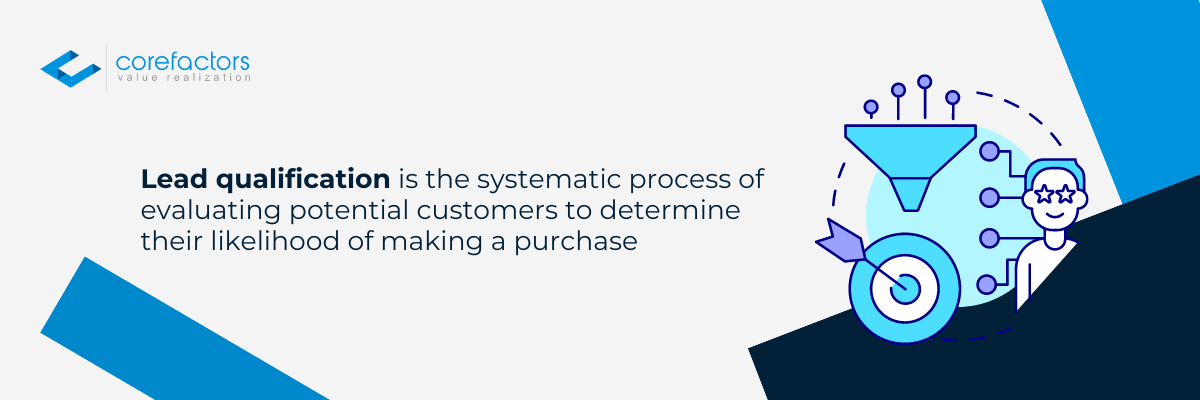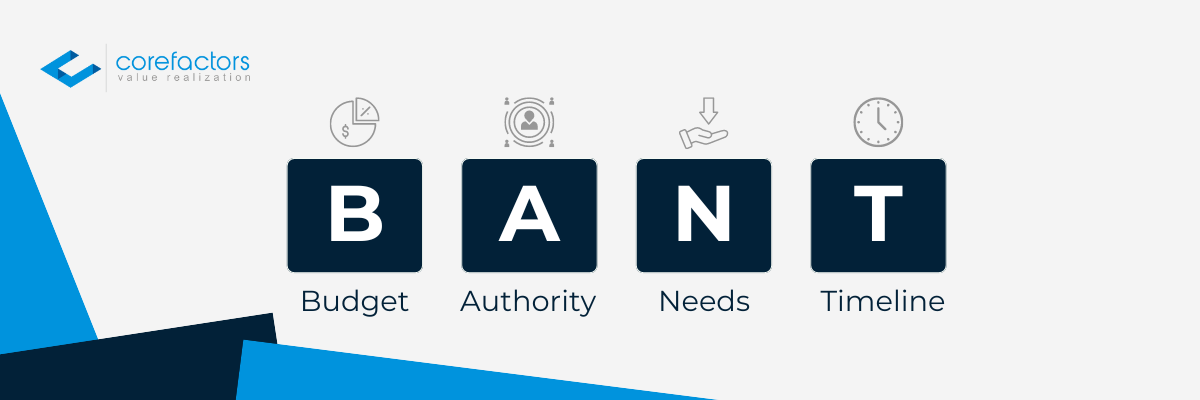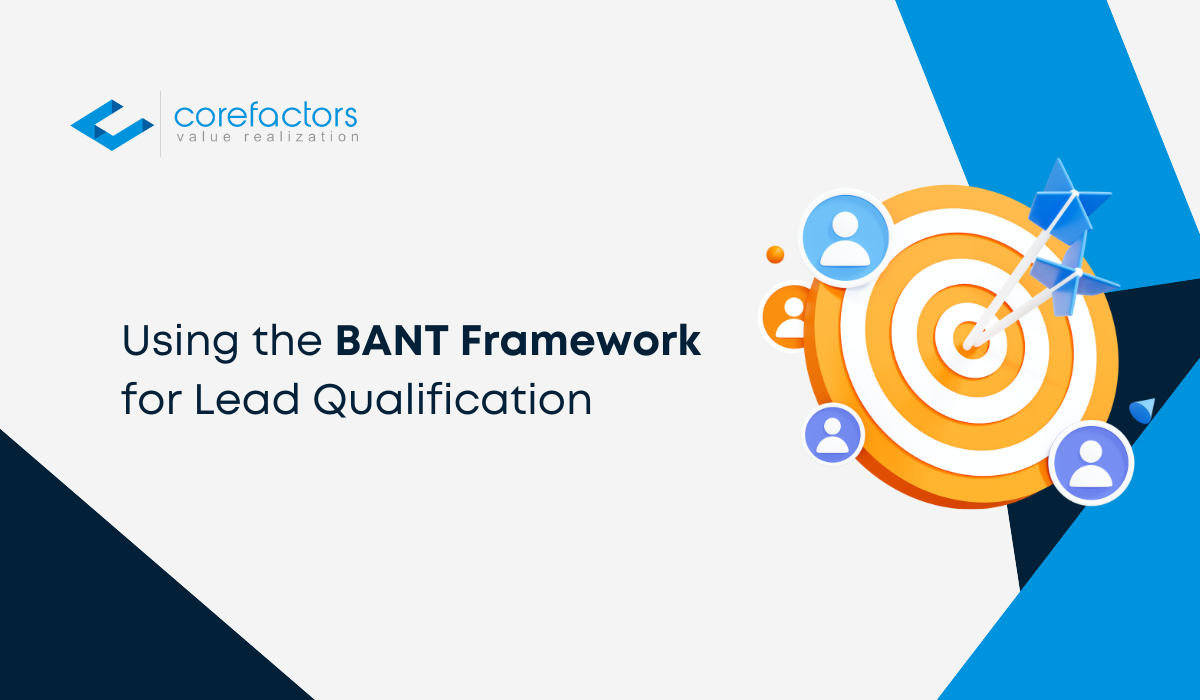Time is precious and no one knows that better than a sales rep. You can not afford to keep following up with leads that are not likely to make a purchase. You need a lead qualification process.
The BANT Framework is the most commonly used approach to qualify leads and save time and effort.
This blog talks about how you can use the BANT framework to successfully qualify leads, the practices you need to follow, and the solutions to some challenges in this framework.
What is Lead Qualification?
Lead qualification is the cornerstone of successful sales strategies. It is the process of determining whether a potential prospect fits the criteria of an ideal customer and whether they are likely to purchase your product or service.

In essence, lead qualification is about separating the wheat from the chaff and ensuring that your sales efforts are focused on leads with the highest likelihood of conversion.
You must prioritize your efforts toward leads with the greatest potential for conversion. This increases the efficiency of the sales process and enhances the sales team's overall effectiveness. Several frameworks can help you qualify leads and streamline efforts. We will talk about one such framework called BANT in this blog.
What is BANT?
BANT stands for Budget, Authority, Need, and Timeline. It is a framework that provides a structured approach to qualifying leads, enabling you to assess each lead's suitability and likelihood of conversion systematically.
Let’s understand each component of the BANT Framework.

Budget: Understanding a lead's budgetary constraints or financial resources is crucial in determining their ability to make a purchase. By assessing their budget upfront, you can tailor their offerings to align with the prospect's financial capabilities, thus increasing the likelihood of a successful sale.
Authority: Identifying decision-makers within a potential client's organization is paramount. You need to pinpoint individuals who have the authority to make purchasing decisions or influence the decision-making process. Failure to engage with the right stakeholders can result in prolonged sales cycles or lost opportunities.
Need: Assessing a lead's specific needs and pain points is fundamental to addressing their challenges effectively. By understanding what motivates a prospect and what problems they are looking to solve, you can position your product or service as the ideal solution, thereby increasing the likelihood of conversion.
Timeline: Determining a lead's timeline for making a purchase is essential for prioritizing sales efforts and managing expectations. You need to ascertain the urgency of the prospect's needs and align their sales process accordingly. This ensures that efforts are focused on leads with immediate buying intent, while also nurturing longer-term opportunities.
Incorporating the BANT framework into the lead qualification process will empower you to make informed decisions and prioritize your efforts effectively. By evaluating each lead against the criteria of Budget, Authority, Need, and Timeline, you can streamline the sales process, improve conversion rates, and ultimately drive business growth.
How Can You Use BANT for Lead Qualification?
A prospect can be asked multiple questions to qualify them under the BANT framework. These questions help the sales teams understand whether their leads are qualified to make the purchase and tweak their sales strategy accordingly.
If the leads you end up with are neither the decision-makers nor are they looking for the solution you provide, there is some serious flaw in your lead generation process. The BANT framework acts as a reality check.
Evaluate Financial Fit: Budget
You can use various strategies to uncover a prospect's budgetary constraints or financial resources. This may involve asking direct questions about their budget for the project, exploring their current spending on similar solutions, or discussing their financial priorities and constraints.
Questions you can ask
- What is your budget for this project/product/service?
- Do you have a specific budget allocated for this purchase?
- Are you the person who sets the budget, or is there someone else involved?
- Have you previously allocated funds for similar projects?
- Is there flexibility in your budget if you find the right solution?
- What financial constraints are you currently facing?
- What is your expected return on investment for this purchase?
- Have you already set aside the budget for this year, or are you looking at next year’s budget?
Once the prospect's budget is understood, you can then tailor your offerings to fit within those parameters. This may involve presenting different pricing options or packages, highlighting the value proposition of the offering, or offering flexible payment terms to accommodate the prospect's budgetary needs.
Identify Decision Makers: Authority
You need to determine who holds the authority to make purchasing decisions or influence the decision-making process. Your sales strategy or pitch depends on this.
Identifying the decision-maker may involve asking direct questions about the decision-making process and who else is involved, exploring the prospect's organizational structure and hierarchy, or conducting research to identify key stakeholders within the organization.
Questions you can ask
- Who will be involved in the decision-making process for this purchase?
- What role do you play in the purchasing decision?
- Who else on your team should we include in our discussions?
- Is there a procurement process we should be aware of?
- Do you need approval from other departments or stakeholders?
- Can you describe the decision-making hierarchy in your company?
- How have similar decisions been made in the past?
- Who will be the end user of this product/service?
Once decision-makers are identified, you can customize your approach and messaging to resonate with their specific needs and priorities. This may involve addressing their pain points directly, highlighting the benefits of the offering, or demonstrating how the solution aligns with the organization's goals and objectives.
Assess Pain Points and Requirements: Need
The third criterion is to identify your prospect’s pain points. You need to know their problems to figure out how your product or service can best solve their pain. It is also essential to effectively position your offerings.
Questions you can ask
- What specific challenges or pain points are you looking to address?
- Why is this project/product/service important to your business right now?
- What are the primary goals you want to achieve with this purchase?
- How are you currently addressing these challenges?
- What features or capabilities are most important to you?
- Can you describe an ideal solution for your needs?
- What has prevented you from addressing these needs before?
- How will this purchase impact your business operations?
By showing that you can understand the requirements and listening to their problems instead of trying to sell your solution, you can build a sense of trust and credibility. Highlight key features that solve their issues, and provide testimonials or access to customer stories that show success in similar situations.
Determine Buyer Intent: Time
You need to figure out how long it will take for the prospect to make the purchase decision. This timeline will determine how you will prioritize sales efforts and manage expectations.
Questions you can ask
- What is your timeframe for implementing this solution?
- Do you have a deadline for making a decision?
- When do you need to see results or benefits from this purchase?
- Are there any upcoming events or deadlines driving your timeline?
- How quickly do you need to have the solution in place?
- Is there a specific date or milestone you are working towards?
- What is the process for approval and procurement, and how long does it typically take?
- Are there any seasonal or cyclical factors affecting your timeline?
Answers to these questions can help you expedite the process, provide additional support or resources to help prospects meet their deadlines, or nurture longer-term opportunities until they are ready to move forward.
Implement BANT in your Lead Qualification Process
Here's how you can implement BANT in your sales conversations:
Prepare: research the company, industry, and key decision-makers before engaging with a prospect to tailor your approach. Prepare a list of questions to uncover each aspect of BANT during the conversation.
Engage: Initiate the conversation by building rapport and establishing trust with the prospect. Ask open-ended questions to encourage them to share their challenges, goals, and priorities.
Qualify: Use the BANT framework to systematically assess the prospect's Budget, Authority, Need, and Timeline. Ask targeted questions to uncover budgetary constraints, decision-making authority, specific needs, and timeline for making a purchase.
Listen: Actively listen to the prospect's responses and take note of any key insights or opportunities. Demonstrate empathy and understanding of their challenges and priorities.
Tailor: Tailor your messaging and solutions to align with the prospect's needs and priorities. Highlight the value proposition of your offering and demonstrate how it addresses the prospect's specific pain points and requirements.
Advise: Position yourself as a trusted advisor by providing valuable insights and recommendations based on the prospect's needs and goals. Offer solutions that meet their budget, timeline, and requirements, while also addressing their long-term objectives.
Challenges of the BANT Framework
While the BANT framework provides a structured approach to lead qualification, you may encounter common challenges when implementing it. The table below outlines some of these challenges and their solutions.
Conclusion
Lead qualification is a critical component of a successful sales strategy, and the BANT framework provides a structured approach to effectively qualify leads.
By assessing a prospect's Budget, Authority, Need, and Timeline, you can prioritize your team’s efforts on leads with the highest likelihood of conversion, thereby increasing efficiency and driving business growth.
Continuously refine your lead qualification process, stay informed about industry best practices, and leverage the insights from the BANT framework to enhance sales performance.
Frequently Asked Questions (FAQs)
What are the qualifying criteria for BANT?
BANT covers four major factors - Budget, Authority, Need, Timeline to qualify leads.
What are the benefits of using the BANT framework?
it helps understand the prospect better and align your product or service to best suit the customer requirement.
What is an alternative to BANT?
The FAINT framework that stands for Funds, Authority, Interest, Need, and Timing. It is similar to BANT but focuses on “Interest” instead of a concrete budget.







